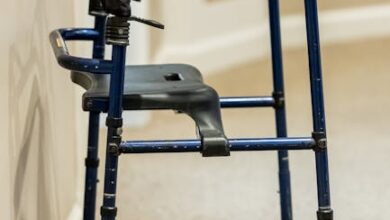The Spinal Alignment Imperative: Why Stomach Sleeping is Tricky

Ah, the stomach sleeper. If you’re one of the roughly 16% of adults who prefers sleeping on their front, you know the unique blend of comfort and concern that comes with it. There’s something undeniably cozy about sprawling out, but deep down, many stomach sleepers harbor a nagging worry: “Is this actually good for my back?”
I get it. As a certified Sleep Science Coach, I’ve had countless conversations with individuals who wake up with stiffness, lower back pain, or a crick in their neck, all while swearing by their preferred stomach position. The truth is, while it might feel natural, stomach sleeping poses a significant challenge to maintaining a healthy spinal alignment.
But here’s the good news: you don’t necessarily have to abandon your preferred position altogether. With the right strategy – and crucially, the right mattress – you can mitigate many of these risks. In 2025, mattress technology continues to evolve, offering even better solutions. My goal today is to cut through the marketing noise and guide you towards the best mattresses for stomach sleepers, specifically engineered to keep your spine happy and healthy.
The Spinal Alignment Imperative: Why Stomach Sleeping is Tricky
Let’s talk spines. Your spine is a marvel of engineering, designed to maintain a natural S-curve. This curve acts as a shock absorber, distributing weight and supporting your body. When you sleep on your back or side, it’s relatively straightforward to keep this curve intact with the right pillow and mattress firmness.
Stomach sleeping, however, often works against this natural design. The primary issue is gravity. When you lie face down, your hips and midsection tend to sink deeper into the mattress than your shoulders and head. This creates an unnatural arch in your lower back, pulling your spine out of its neutral alignment.
Over time, this constant arching can put immense strain on your lumbar region, leading to chronic lower back pain. Add to that the inevitable head turn to the side (unless you have a fancy face-down pillow, which few do), and you’ve got rotational strain on your neck and upper spine. It’s a recipe for discomfort, and frankly, it can compromise the restorative quality of your sleep.
It’s Not Just Firmness, It’s Support
This is a critical distinction that often gets overlooked. Many people assume stomach sleepers just need the “firmest” mattress they can find. While firmness is important, it’s not the whole story. A mattress can feel firm on the surface but still lack adequate deep support, allowing your heaviest parts (hips and pelvis) to sink too far.
True support for a stomach sleeper means the mattress actively resists the sinking of your midsection, keeping your entire body on a relatively even plane. This ensures your spine remains straight from your neck all the way down to your tailbone, minimizing that dreaded arch.
What to Look For: My Mattress Must-Haves for Stomach Sleepers (2025)
So, what does this ideal mattress actually look like? As a sleep science coach, my recommendations for the best mattresses for stomach sleepers prioritize a delicate balance of firmness and robust support. Think of it as a perfectly engineered bridge that keeps you level, no matter your weight distribution.
The Goldilocks Zone of Firmness: Medium-Firm to Firm
Forget the rock-hard mattresses of yesteryear. For most stomach sleepers, a medium-firm to firm feel is the sweet spot. A mattress that’s too soft will allow your hips to sink excessively, recreating the spinal arch we want to avoid. Too firm, on the other hand, might create uncomfortable pressure points around your ribs, hips, and shoulders, leading to restless nights.
The goal is a surface that feels supportive and resilient, offering just enough give to contour slightly to your body’s curves without letting your heavier midsection plunge downwards. When you lie on it, you should feel like you’re floating *on* the mattress, not sinking *into* it.
Material Matters: Hybrids, Firm Foams, and Latex Lead the Way
The internal construction of a mattress plays a huge role in its ability to deliver the necessary support.
Hybrid Mattresses: The Best of Both Worlds
In 2025, hybrid mattresses continue to be a top contender for stomach sleepers. They combine the best attributes of innerspring coils and foam layers. The individually wrapped coils provide exceptional, targeted support and responsiveness, preventing deep sinkage while also promoting airflow to keep you cool. The comfort layers (often memory foam, latex, or polyfoam) offer just enough cushioning without sacrificing the underlying support. Look for hybrids with higher coil counts and denser foam layers for optimal performance.
Firm All-Foam Mattresses: Density is Key
If you prefer an all-foam feel, don’t just grab the first memory foam mattress you see. Traditional, softer memory foam often allows too much sinkage for stomach sleepers. Instead, look for firm all-foam options that utilize high-density polyfoam as their core support layer, often topped with a thinner, firmer memory foam or latex layer. These denser foams provide the pushback needed to keep your hips elevated. Always check the density specifications, as a higher density usually translates to better durability and support for stomach sleepers.
Latex Mattresses: Naturally Supportive and Responsive
For those seeking natural or organic options, latex mattresses are an excellent choice. Latex is inherently buoyant and responsive, meaning it offers a springy feel that lifts your body rather than letting it sink. This makes it fantastic for maintaining spinal alignment. It’s also incredibly durable and breathable. Both Dunlop and Talalay latex can work well, but ensure the firmness level is appropriate—aim for medium-firm to firm.
Zoned Support and Edge Support
Beyond the core materials, a few other features can significantly enhance a mattress’s suitability for stomach sleepers.
Zoned Support
Some mattresses are designed with “zoned support,” meaning different areas of the mattress have varying firmness levels. For stomach sleepers, a mattress with firmer support under the hips and lower back can be incredibly beneficial. This targeted support helps counteract the tendency for the midsection to sink, keeping the spine in a straighter line.
Edge Support
Good edge support isn’t just a luxury; it’s practical. Stronger edges prevent premature sagging and allow you to utilize the entire surface area of your mattress without feeling like you might roll off. This is particularly useful if you tend to sleep close to the edge or have a smaller bed.
Beyond the Mattress: Small Tweaks for Better Stomach Sleeping
While the mattress is king, a few other adjustments can optimize your stomach-sleeping experience.
Pillow Power: Less is More
This is crucial. Most stomach sleepers use a pillow that’s too thick, which further hyperextends the neck and exacerbates spinal misalignment. My advice? Opt for an extremely thin pillow, or no pillow at all, under your head. If you need some cushioning, a flat, compressible pillow is best. Alternatively, placing a thin pillow under your pelvis can help elevate your hips and reduce the arch in your lower back, working synergistically with your firm mattress.
Listen to Your Body
Ultimately, the “best” mattress is subjective to your body weight, shape, and personal preferences. While these guidelines provide an excellent starting point, pay attention to how your body feels after a few nights. Does your back feel better? Is your neck less stiff? Your body will tell you what works.
Finding the best mattress for stomach sleepers isn’t just about comfort; it’s about investing in your long-term spinal health and overall well-being. As a Sleep Science Coach, I can’t stress enough how profoundly your sleep surface impacts your daily life. By prioritizing a mattress that offers superb support and a medium-firm to firm feel, you’re taking a significant step towards more restorative sleep and a pain-free morning.
So, arm yourself with this knowledge, explore the excellent options available in 2025, and remember: a properly aligned spine is the foundation of great sleep. Here’s to waking up refreshed and ready to take on the day!





